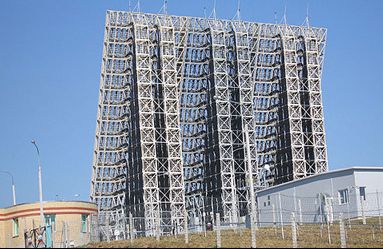The Russian defensive barrier against a possible ballistic attack is numerically superior to that deployed by the US which currently has thirty interceptors, to which more 14 will be added in the coming years. 24 fewer missiles, however, than those deployed by the Russians.
The United States currently has two strategic missile defense systems on its territory: in Alaska and California. Or rather, these are the ones we officially know. Russia has only one system of the same type active in the Moscow area: the A-135, active 24 hours on 24 (totally ineffective against a multi-head attack).
Certainly, the "Shield" should expand to include a third missile defense site in Europe.
Moscow has always demanded legally binding guarantees, while NATO has reiterated the "full respect" of the Treaty on intermediate-range nuclear forces (INF), those that were once called "Euromissiles".
The fear is that the elements of missile defense that will gradually reach Europe can violate the strategic balance and undermine international stability.
The United States and NATO, in fact, provide radar and defense systems based on land and sea with the "Aegis" in Romania, Turkey, Spain and Poland.
The Russian Achilles heel: the Arctic
A high-precision missile attack against Russia would only be effective if carried by launchers deployed in the Arctic region. Missiles launched from other regions would be able to destroy marginal targets, due to their limited flight autonomy.
The deployment of troops in the Arctic began last December with the dispatch of electronic war units while at the city of Vortuka, north of the polar circle.
Russia plans to complete the Arctic radar detection network within the 2018. Four class "Voronezh" radar stations are already active. Two class "Voronezh" model "DM" radars, six thousand kilometers of discovery with the ability to simultaneously trace 500 targets, are fully active in the territory of Krasnodar and in the Leningrad region. Radar stations in the Kaliningrad and Irkutsk regions are undergoing functional tests.
 "Voronezh" radars can be quickly redistributed and require a reduced crew, compared to the previous generation. Russia will put into service seven "Voronezh" class radars in the next five years. The new radars will replace the obsolete "Dnepr" and "Daryal" class systems.
"Voronezh" radars can be quickly redistributed and require a reduced crew, compared to the previous generation. Russia will put into service seven "Voronezh" class radars in the next five years. The new radars will replace the obsolete "Dnepr" and "Daryal" class systems.
Moscow's design also includes a fully automated air defense radar capable of detecting all kinds of threats, including cruise missiles and unmanned aircraft, at a maximum distance of 3 000 kilometers. The automated early warning radar, dubbed "Container", will cover most of Europe.
Since 2 last December, the system is being tested at the city of Kovylkino. Unless unexpectedly, it could become fully operational by the end of the 2015.
Specifications, number of radar stations and location are covered by military secrecy.
Franco Iacch
(photo: US Department of State / Russian Presidency Archive)












